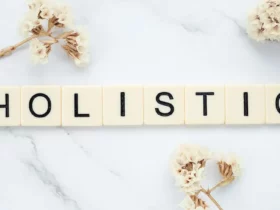From event planners to restaurant owners, flowers are one of the most delicate and important items we often overlook.
You need plenty of them to decorate your wedding venue and hold the bouquet. You need flowers to set up a romantic date-special restaurant. You also need them to set up a good vibe in the reception areas of hotels, hospitals, and offices.
Flowers are among the most important herbal and skin care ingredients. The medicinal benefits of certain flowers make them highly useful in the culinary and medicine industries.
Several companies have enabled flower delivery perth and other areas within the country that produce and deliver aboriginal flower varieties.
However, ignoring the importance of flowers and their representation, we often miss the first impressions.
Even if you’re using flowers to enhance the look and feel of your business, did you ever wonder what flowers make the best impressions?
Our answer to that is native flowers!
If you’re establishing your business in Australia and looking for flowers, you cannot miss the country’s vast list of native blooms to energize and revitalize your establishment.
This article will help you learn more about native Australian flowers and why you should consider using them for your business.
Why Should You Choose Native Flowers?
Native plants are ideal for landscaping due to their beauty and low maintenance needs. They offer ecological advantages, such as fostering biodiversity and assisting local fauna, and are sustainable due to their adaptation to the local temperature and soil conditions.
They can also help fight climate change by reducing noise and carbon pollution.
Native plants can foster biodiversity and develop habitats for nearby species, which can benefit the community and environment.
Using drought-resistant plants can help conserve water, time, and money by using less water in locations prone to drought.
Native plants provide habitat, nectar, a safe haven, and food for wildlife. We can maintain local ecosystems and encourage biodiversity by incorporating native plants into our gardens and landscapes, creating a healthier environment for humans and animals.
Australian Native Flowers That You Must Consider
The global floricultural industry calls for a diverse range of rare and exotic cut flower and foliage products that consistently attract the attention of this fashion-driven industry.
It is a rich resource of valuable new flower products that are waiting to be fully developed and sold worldwide.
Domestic consumers increasingly seek landrace flowers grown commercially in the beds or rows of coastal plantations.
As adapted to harsh and often dry conditions, native plants adapted to local conditions should be considered.
Here’s a list of ten native Australian flowers that you must know about for commercial purposes—
1. Kangaroo Paw
Native to the South-West of Western Australia, the Kangaroo Paw Flower (Anigozanthos flavidus) produces hairy blossoms in yellow, green, and red shades. It is plentiful, responsibly harvested, and organically grown.
It is simple to grow and helps repair damaged soil. According to research, it can also be utilised to maximise the skin’s capacity for regeneration.
Western Australia is home to kangaroo paws, perfect for floral arrangements with cut flowers.
They lend texture and whimsy to modern and seasonal designs, particularly in the autumn and winter, because of their long stems, hairy texture, and brilliant hues.
Due to its ability to aid skin regeneration and provide antioxidant characteristics, kangaroo flower extract is a well-liked product in the cosmetics industry.
It also contains significant amounts of linoleic acid, a healthy source of omega-6 fatty acids, and ferulic acid, a powerful antioxidant.
Because of these advantages make kangaroo paws a sought-after component in skincare and cosmetic products.
2. Aussie Box
The Australian box is a shrub that blooms prolifically in the spring and summer with clusters of lilac flowers.
It is a 2 m tall drought-tolerant plant well-liked for coastal gardens because of its toughness and lovely beauty.
It is resistant to salt spray. Even in places with a lot of salt and wind, this tough native Australian bloom can endure dryness and is well-liked on the beach or coastal residences.
These flowers look fantastic in hotel and restaurant lobbies and business reception areas.
It is a gorgeous, adaptable plant that may reach six feet tall. It is an excellent option for eco-friendly landscapes because of its reputation for luring bees and other pollinators.
It is a hardy plant for any garden since it can survive drought and inclement weather.
3. Billy Buttons
Billy buttons, also known as Craspedia, are a common choice for adding texture and colour to gardens and landscapes since they are native to Australia and New Zealand.
They are appropriate for bouquets, boutonnieres, and floral arrangements and feature golden globular flower heads.
Themed wedding celebrations look fantastic with these flowers. Billy buttons are becoming increasingly common in flower design because of their distinctive look and adaptability.
They may be incorporated into many settings, from rustic to modern, bringing a whimsical element to any flower design.
They are available in various yellow and gold tones, which may lend a splash of colour to any space or occasion.
Incorporating billy buttons into the colour scheme of a restaurant or hotel can create a cohesive and visually appealing atmosphere for guests.
The golden and yellow flowers can contrast with colder colours like blue and green or work well with warm tones like brown and orange.
4. Flannel Flower
Actinotus helianthi is a short-lived perennial shrub with white, sometimes pink flowers in spring and summer. It deserves a spot in every flower garden in Australia.
Flannel flowers are a symbol of mental health awareness in Australia. Mental health therapists and professionals are often advised to keep fresh flannel flowers in their rooms.
It is commonly used in aromatherapy and natural medicine to treat anxiety, depression, and stress-related disorders.
Flannel flowers symbolize elegance, beauty and purity and are highly valued in festivals and religious ceremonies.
One of the most elegant members of the Australian Aboriginal family, she has soft white, green-tipped petals and silvery, silky leaves.
It also features a delicate fragrance and is popular for wedding bouquets and flower arrangements.
Its unique appearance and versatility make it a favourite among florists and flower lovers.
5. Banksia
Due to its cylindrical flower heads, banksias are a well-known shrub in Australia.
They give flower bouquets and centrepieces more punch and are durable enough to handle most soil conditions. They come in various colours and sizes and last long in vases.
Because of their striking shapes, vibrant colours, and prolonged vase life, banksias are a preferred feature flower for floral arrangements.
They value flower arrangements culturally because of their distinctive qualities and long-standing medical use.
The marri tree is a crucial ecosystem component because it offers a habitat for several animal species and reduces soil erosion.
Burning the bark and combining the ash and resin was historically used to treat stomach ailments.
It is a vital source of nutrition for nectarivorous animals and income for Australia’s cut flower and nursery businesses.
Indigenous Australians employed its blossoms, renowned for their therapeutic qualities, for curing various illnesses.
6. Waratahs
The Waratah is the official flower symbol of New South Wales and is known for its crimson flowers that bloom from September to November.
It is popular as a cut flower and has cultural significance as it has been used medicinally by Australian Aborigines.
It is also the national emblem of New South Wales and is prized in Australian culture for its beauty and symbolism.
Waratahs are a diverse group of flowers native to southeastern Australia, including New South Wales, Victoria and Tasmania.
This popular cut flower will last up to two weeks in a vase with proper care. The name ‘Waratah’ comes from the Eora tribe, the indigenous people of the Sydney area.
It originates from southeastern Australia and is the coat of arms of New South Wales. A popular cut flower can be kept in a vase for up to two weeks with proper care.
7. Eucalyptus
Originally from Australia, eucalyptus trees have long, thin leaves that dangle on a single stem. It bears blooms with fluffy white or red stamens and a distinctly camphoraceous odour.
It belongs to the Myrtle or Myrtaceae family and is said to provide a variety of health advantages like the following:
- Lowering inflammation.
- Alleviating stiffness in the muscles.
- Squelching coughs.
- Clearing out congestion.
- Acting as an antibacterial.
- Promoting general relaxation.
Eucalyptus has established its position in them as it adds depth and variety to floral arrangements practically everywhere.
These flowers are becoming a staple for aromatherapy studios and other commercial organizations to promote a healthy and positive atmosphere.
It is frequently found in candles, bath goods, and personal care items.
The finest variety of eucalyptus to hang in the shower to assist people in clearing their brains and unclogging their sinuses is regarded to be Baby Blue eucalyptus.
It acts as a natural bug repellent since insects like flies, mosquitoes, and tiny insects tend to avoid it.
8. Mimosa
At an early age, mimosa produces lovely yellow blooms, and the flowers and foliage are frequently used to make floral arrangements.
They have been grown for food, medicine, and colours, and they have a strong, sweet, and honey-like scent that is even utilised in perfumes.
When nature is most abundant in the late spring and early summer, mimosa flower tincture is a great delight.
Australia has accepted the mimosa shrub, a native of Central and South America. Plants grow quickly, and seeds sprout easily.
Mimosa trees are widely used as decorative trees worldwide, including Australia. It is a fast-growing plant well-known for its stunning pink summer blossoms.
It draws hummingbirds, butterflies, and other helpful pollinators and beneficial insects throughout the flowering season.
The beautiful pink blooms give the yard a splash of colour and a tropical atmosphere.
9. Waxflower
Waxflowers have long been thought to bring good fortune, lasting prosperity, and wealth. In Australia, the waxflower is used in nearly every wedding since it is said to represent fond memories and a fresh start.
Its minimal cost makes it a fantastic option for DIY weddings on any budget. Waxplants are simple, complete, leathery-leaved perennial evergreen vines or twining shrubs that often grow slowly.
The persistent blooms typically grow in dazzling clusters.
Wax Flowers are frequently used as filler flowers in bridal bouquets because they signify wealth and enduring love.
It may be substituted for roses, tulips, lilies, and peonies and, when cut, lasts up to three weeks.
Due to its petite size and multiple flowers per stem, it is also an excellent filler for bouquets and arrangements, and its sweet smell gives an added touch of elegance.
10. Variegated Spurflower
The Variegated Spurflower is a herbaceous annual with a trailing style of growth that gradually spills over the edges of hanging baskets and containers.
Its lovely little tomentose spherical leaves are year-round lime green with characteristic creamy white margins. They are greyish-green in hue. It requires little upkeep and may be trimmed as needed.
The variegated spurflower matures to a height of 12 inches, reaches a peak height of 16 inches with the blooms, and spreads out to a width of 24 inches.
It is a drought-tolerant plant that works well in xeriscape or low-water gardens. Cuttings can be used to propagate it. However, there may be limitations or bans on this.
It is a fantastic choice to use as a “spiller” in the “spiller-thriller” genre since it has a trailing habit of growth and is suitable for planting in outdoor pots and hanging baskets.
What Makes Flowers Suitable For Commercial Cultivation?
Understanding the distinctions between Australian native plants and the conventional flower crops still cultivated for commerce today is crucial.
Since the 16th century, breeders have enhanced traditional flower crops, allowing for various flower colours and forms.
Traditional flower crops have been cultivated for more than 2000 years.
Nevertheless, intensive improvement projects have not been directed at native Australian species, and selection programmes have just lately started.
A native plant must have attractive blooms in various colours and forms. They must have robust stems that are proportionate to the bloom.
Flowers with an appropriate vase life after harvest are ideal for commercial cut flower production. Several native species’ postharvest traits are still poorly understood.
Most commercial flower harvests are raised in beds, with several plants of the same kind massed together.
If not controlled, pests and illnesses can become a concern and cause significant crop losses.








